Selecting the Best Adobe Fonts for Logo Design Success
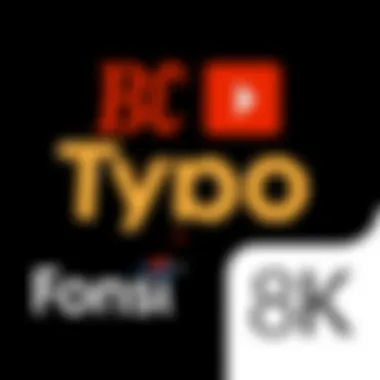
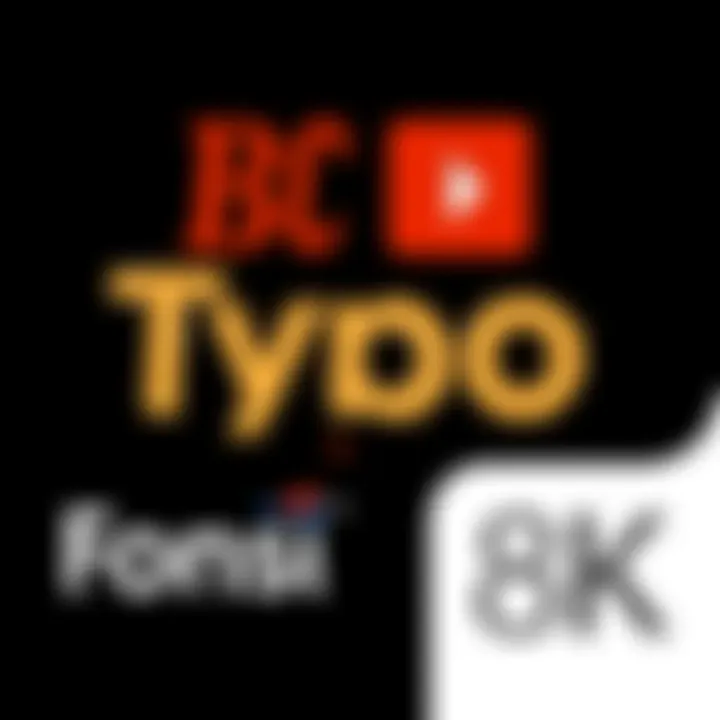
Intro
Choosing the right font for a logo design is crucial in establishing a brand identity. In many cases, visitors will form an opinion about your brand within the first few seconds of encountering it. Fonts do more than just spell out a name; they convey feelings, moods, and characteristics of the brand. Adobe Fonts offers a diverse collection of typefaces that cater to various styles and visions, which provides a playground for designers looking to create a memorable impression.
The journey to selecting the optimal font goes beyond merely picking a style you like. It involves understanding how the typeface fits into the larger picture of your branding strategy. From evoking trust to suggesting creativity, every aspect of a font’s design plays a role in how your audience perceives your business.
In this article, we will take a closer look at the prominent Adobe Fonts suitable for logo creation. You will discover which characteristics make a font effective in branding and uncover practical tips that empower designers and entrepreneurs alike to navigate the typography landscape with confidence.
To achieve this, we will explore specific Adobe fonts, dissect their features and uses, and clarify how to assess the right fit for your logo. Whether you are a seasoned professional or just stepping into the world of branding, this guide will provide valuable insights and tools necessary for success.
A good font can serve your logo well, and knowing how to choose it can set you apart from the competition. So, grab a seat as we embark on this design journey together.
Understanding the Role of Fonts in Branding
Fonts are more than just letters on a page; they are a fundamental element of your brand's visual identity. The right font can convey the essence of a business, evoke emotions, and enhance recognition, which is why understanding their role is pivotal in logo design. Whether you’re a small startup or a multinational corporation, the font should resonate with your target audience and foster an emotional connection.
When considering font choices, one must think about the message that the font carries. Fonts have the power to enchant or alienate. Take for instance how a sharp, angular typeface might resonate in the high-tech industry, suggesting innovation and modernity. Conversely, a softer, rounder font may be more appropriate for brands focused on care and gentleness, appealing to a more homely audience. This demonstrates how subtle variations can drastically alter perceptions.
Typography is not just about style; it’s a silent ambassador of your brand. A well-chosen font can enhance brand recall, making it stick in the minds of consumers. Visual coherence across all platforms—whether print, web, or merchandise—must be maintained. Brands like Apple or Coca-Cola have perfected this, ensuring their typefaces are instantly recognizable, no matter where they appear.
As we navigate through the world of fonts, it’s crucial to remember their flexibility. Not all fonts are suited for every medium. A font that shines on a digital screen might get lost in print, while one that looks stunning in a large format may falter in a smaller context. This adaptability, alongside ensuring readability and aesthetic appeal, forms the backbone of font selection in branding.
"The right typeface isn’t just good looks; it’s about creating a visual connection."
In short, fonts are a vital tool for B2B and B2C communication, influencing everything from brand loyalty to sales conversions. Their role in branding is not to be underestimated; in fact, it can be the deciding factor between connecting with an audience or falling flat. With that in mind, let’s explore how typography impacts psychological perceptions of a brand, delving into the nuances that affect decision-making and customer engagement.
Criteria for Selecting Logo Fonts
When it comes to logo design, selecting the right font is a crucial endeavor. The font you choose doesn't just look good; it can communicate your brand's identity, evoke emotions, and influence how your audience perceives your business. Understanding the key criteria for selecting logo fonts allows designers and business owners to make informed decisions that align with their vision and goals.
Legibility and Readability
Legibility and readability are not just fancy terms tossed around in design circles; they are foundational elements that lay the groundwork for effective logo communication. A logo that isn’t easily read can lose its impact and purpose. Imagine a logo emblazoned with a font so ornate that even your grandmother would squint at it—definitely not ideal!
When designing a logo, consider whether the font remains legible in various sizes and across different applications. For example, the text might appear on a massive billboard or a tiny business card. Does it still stay true to your brand's voice? Generally, sans-serif fonts tend to offer better legibility at smaller sizes compared to serif fonts.
"A good logo should be simple, memorable, and legible at a glance."
Now, let's think about legibility in different contexts. When people encounter your logo online, whether on social media or a website, they should be able to grasp the essence of your brand immediately. Fonts like Helvetica and Garamond may serve you well, offering clarity without frills.
Versatility across Media
The digital and physical worlds present a myriad of platforms where your logo might appear. Your font selection must be adaptable to these variances. From social media profiles to business cards and even promotional merchandise, a font's versatility is key. It’s not just about looking good on a screen; it needs to hold its own when printed or displayed in non-traditional ways, like etched into a wooden sign.
For instance, consider fonts like Montserrat or Futura. These fonts offer a modern, clean aesthetic that translates well across various media types. Whether it’s on glossy paper, a textured surface, or a digital screen, the consistency in presentation helps to reinforce brand identity. Think about your audience's experiences; will they encounter your logo while scrolling through a feed or gazing at a shirt? Your font should adapt without losing its character.
Aesthetic Appeal and Consistency
Aesthetic appeal might feel subjective, but there’s a science behind what looks good and why. The font you choose should not only embody the essence of your brand but also foster an emotional connection with your audience. Harmony in design is essential. A discordant font choice can confuse or alienate potential customers.
Consistency plays a critical role here. The logo's font should resonate with your overall brand strategy, including your color scheme and visual narrative. If you’re a cutting-edge tech startup, using a playful cursive font may mislead customers about your serious capabilities.
To illustrate, let’s say you run a wellness brand. Choosing a soft, rounded font can evoke feelings of comfort and tranquility, while a stark, angular font may suggest a medical or clinical approach. Think deeply about what your brand stands for and how your font aligns with that message.
Exploring Popular Adobe Fonts for Logos
Selecting the right font from Adobe's library can make or break a logo design. Fonts are not merely aesthetic choices; they carry the brand's essence, reflecting its values, personality, and vision. Understanding the nuances of popular fonts can guide designers in making informed decisions that resonate with their target audience. When it comes to logos, the choice of font can enhance brand recognition, evoke emotions, and even dictate perceptions about a business. Let's explore some of Adobe's fonts that have gained traction among designers and businesses, along with their characteristics, benefits, and ideal use cases.


Helvetica Neue
Characteristics and Benefits
Helvetica Neue is a classic sans-serif typeface renowned for its clean and modern appearance. This font embodies clarity and neutrality, making it versatile across a wide spectrum of industries. One of its standout features is the uniformity of its characters, providing a consistent appearance that maintains legibility at various sizes. The lack of excessive embellishments means it can adapt well in both formal and informal contexts, which is why it’s a go-to choice for many logos.
Best Use Cases
The real strength of Helvetica Neue lies in its adaptability. It's often used in tech companies and businesses striving for a contemporary look. Its clean lines work wonders for brands aiming to communicate professionalism and reliability. However, relying solely on Helvetica Neue may not yield uniqueness in a crowded market. Therefore, it might benefit from being paired with a more distinctive font to create a memorable logo.
Gotham
Characteristics and Benefits
Gotham is another popular sans-serif option, characterized by its geometric structure and broad appeal. This font stands out for its strong, modern lines that add a sense of trustworthiness. It's a font that feels approachable and robust at the same time. Gotham's adaptability means it looks equally good on websites, billboards, and print.
Best Use Cases
Companies looking to establish a straightforward and solid brand identity often gravitate towards Gotham. It's particularly effective for industries such as real estate, marketing, and even educational institutions. Its modern aesthetics make it suitable for both digital and printed media, although designers should keep in mind that, like Helvetica, it might not capture an original flair when used without complementary typographic treatments.
Futura
Characteristics and Benefits
Futura's beauty lies in its geometric shapes, offering a sleek, forward-thinking vibe. This font has a bit of personality, thanks to its distinctive circular forms and sharp angles. Its modernity lends itself well to brands that are progressive and innovative. The unique characteristic of Futura is that it can evoke a sense of speed and dynamism, making it well-suited for industries focused on technology and design.
Best Use Cases
Futura works wonders for logos in creative fields, such as design studios and fashion brands. Its futuristic aesthetic empowers brands wanting to project innovation. However, its uniqueness may become its downfall if not used carefully. Overuse in certain markets may render it less impactful, so careful consideration should be given to its pairing and backdrop in designs.
Bebas Neue
Characteristics and Benefits
Bebas Neue is known for its bold and striking presence. This sans-serif type is all about impact. Characterized by its tall and narrow design, it commands attention and conveys a sense of urgency. The unique feature of Bebas Neue is its ability to stand out in both print and digital formats without feeling overwhelming, catering well to creators looking for a big statement.
Best Use Cases
It's ideal for logos in industries where catching the eye is essential, like entertainment, sports, and food businesses. Its assertive style is particularly effective in settings where quick communication of brand identity is paramount. Designers should be mindful, though, as Bebas Neue can overshadow other elements if not balanced properly.
Montserrat
Characteristics and Benefits
Montserrat captures a modern, urban feel with its rounded forms and contemporary design. It’s known for maintaining excellent readability, even at smaller sizes, thanks to its well-balanced proportions. This font’s unique feature is its chic presence, making it an attractive choice for businesses that want to appear both fresh and grounded.
Best Use Cases
Organizations in creative industries, cafés, and lifestyle brands often adopt Montserrat for its warm yet professional vibe. While it can thrive on its own, using Montserrat along with a contrasting serif font can yield a sophisticated branding palette that highlights modernity with a touch of tradition. However, designers ought to consider the context carefully, as overuse in trendy markets could lead to fading originality.
By delving into these popular Adobe fonts, designers can better assess their choices, ensuring they opt for typography that not only looks great but also enhances their branding efforts.
Classic vs. Modern Fonts in Logo Design
Selecting the right font for logo design can be a daunting task. Among the myriad of choices, the dichotomy between classic and modern fonts often arises. Each type offers distinct advantages and features that can greatly influence a brand's perception. Understanding the nuances in typography is essential for designing a logo that embodies a brand's values and resonates with its target audience. Whether you lean toward the timeless appeal of classic serif fonts or the sleek aesthetics of modern sans serif options, knowing the strengths of each can make all the difference in the branding game.
Advantages of Classic Serif Fonts
Classic serif fonts carry a certain gravitas that often evokes trust and reliability. Their ornamental strokes and distinct features provide an air of formality and tradition. This is particularly beneficial for businesses in sectors like law, finance, or education, where establishing credibility is paramount. Here are some key advantages of using classic serif fonts in logo designs:
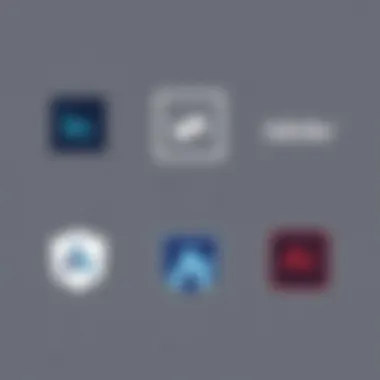
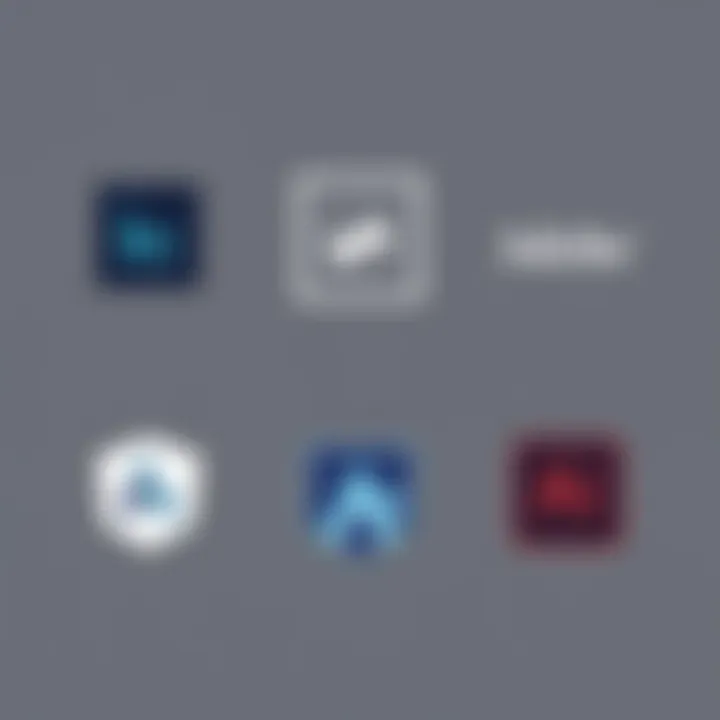
- Timelessness: Classic serif fonts have stood the test of time. Think of renowned brands like Time Magazine or The New York Times. Their use of serif typography conveys authority and respect.
- Readability: The distinct features of serifs make letters easier to read, especially at smaller sizes, which is crucial in logo design.
- Conventional: For brands aiming for a conservative image, serif fonts signal familiarity and comfort. They fit seamlessly within a traditional context, making them an ideal choice for brands rooted in heritage.
While classic serif fonts hold their own charm, they can also limit creativity in certain contexts. For instance, a law firm might benefit from the seriousness of a serif font, but a startup tech company may find it doesn’t convey their innovative spirit. Thus, one must approach this choice with care.
Impact of Modern Sans Serif Fonts
On the other hand, modern sans serif fonts are often perceived as clean, straightforward, and contemporary. They lack the decorative strokes of their classic counterparts, giving them a minimalist appeal. This characteristic makes them widely popular among tech companies and creative industries. When implemented effectively, modern sans serif fonts can lead to strong brand recognition.
Some key points regarding modern sans serif fonts include:
- Simplicity: Their straightforward nature can simplify messaging, ensuring the audience grasps the brand’s core values quickly and easily.
- Versatility: Sans serif fonts tend to work well across various platforms and media, whether it be online or print. This adaptability is crucial in a digital age where logos frequently appear across multiple formats.
- Contemporary Feel: Brands that want to portray innovation or a forward-thinking mindset often find their voice in modern sans serif fonts. Companies like Google and Airbnb leverage this style to connect with a younger, trendy demographic.
However, it’s essential to note that modern fonts may lack the warmth or personality that some businesses might want to convey. This absence could render them less impactful in industries where emotional connection is key.
Combining Fonts for Unique Branding
Choosing the right fonts for your logo is more than just picking something that looks nice. When combined wisely, fonts can coalesce to craft a distinct brand identity that resonates with your audience on a deeper level. This section sheds light on how pairing different typefaces can enhance your brand's visibility and the message it communicates.
Craftian fonts can either gel together like two peas in a pod or clash like rival factions. It’s crucial to navigate this dynamic effectively, as a well-executed combination lays the groundwork for a memorable brand presence. Think of it this way: just as a chef combines flavors to create a sumptuous dish, a designer pairs fonts to amplify brand aesthetics.
Hierarchy and Pairing Techniques
In logo design, establishing a clear hierarchy is like giving your audience a roadmap to your brand's identity. The primary font typically serves as the visual anchor, demanding attention immediately. Coupling it with a secondary font can highlight subsidiary information or add a layer of context.
Here are some techniques to consider:
- Choose Complementary Styles: Pair a bold, sans-serif font with a delicate serif. The first grabs attention while the second provides warmth and a classic touch.
- Maintain Contrast: Different weights and styles help establish a visual hierarchy. A heavy typeface can denote strength, while a lighter one adds a sense of elegance.
- Limit the Number of Fonts: Too many typefaces will create confusion. A good rule of thumb is to stick to two or three fonts.
Incorporating these methods can offer a balanced look to your logo without it appearing overcrowded or chaotic. This balance is what engages an audience, making them more likely to take notice.
Creating Contrast and Unity
Creating a juxtaposition between different fonts doesn’t mean they must be at odds. Rather, it is about finding that sweet spot between contrast and unity. When done adeptly, contrast not only grabs attention but helps ephemeral brands stick in memory.
Here’s how to achieve that:
- Color and Weight Variation: Utilizing different weights in your fonts can create a striking visual appeal. This variation should align with your brand's ethos; a financial institution might favor a more subdued palette compared to a trendy clothing line.
- Experiment with Scale: Playing with font sizes is another way to achieve contrast while maintaining unity. Larger fonts stand as titles, while smaller ones can provide supporting details seamlessly.
- Consistent Styling: Despite differences in font choice, maintaining a consistent styling such as rounded corners or geometric angles can unify your text elements.
When contrast is handled with finesse, it lends a visual rhythm to the design that captures attention and evokes curiosity. Aspects of contrast and unity in font usage ultimately dictate how a logo is perceived, influencing consumer behavior.
As you venture into combining fonts for your brand's logo, keep these strategies in your back pocket. They can help you manifest a visual identity that is not only aesthetic but also captures the essence of your brand's narrative, connecting effectively with your chosen audience.
"Fonts are the vessels in which a brand's story travels. Choose wisely, and make it memorable."
In sum, it’s about combining considerations of hierarchy and contrasting elements in a way that aligns effortlessly with your overarching branding strategy. When done right, the result can be nothing short of stunning.
Testing Fonts in Real-World Applications
When it comes to designing a logo, theory only gets you so far. It’s essential to see how chosen fonts actually perform in real-world contexts. Testing fonts in practical applications allows designers to assess how well their choices align with the brand's identity and audience perception. This part of the design process is often overlooked, yet it can significantly influence the success of a logo.
The first step in this testing phase is to put the chosen fonts into mockups. This involves creating realistic scenarios where the logo will likely be used - be it on business cards, digital advertisements, or packaging. Each of these mediums comes with its own set specifications, which is crucial for evaluating not just readability but also visual appeal. Seeing a font come to life within these contexts provides real insights. The difference between how a font looks on paper versus its digital rendition can be startling.
Mockups and Prototyping
Mockups serve as a valuable tool in the testing phase. By visualizing how a font looks when applied to various mediums, designers can identify potential issues early in the process. For instance, a font that seems visually striking may lose its legibility when resized or placed against a complex background.
- Tools like Adobe XD and Figma: These platforms offer easy ways to create digital mockups that simulate different environments.
- Physical Mockups: For brands that rely heavily on printed materials, creating physical prototypes can help test the font's effectiveness in real-life scenarios. This can include anything from flyers to signage.
Seeing the font used in context allows designers to understand how it communicates with the audience. Will it align well with the brand's message? Does it resonate effectively with the target demographic?
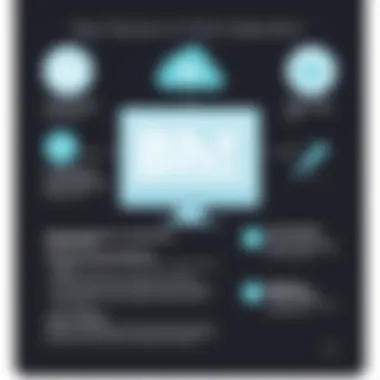
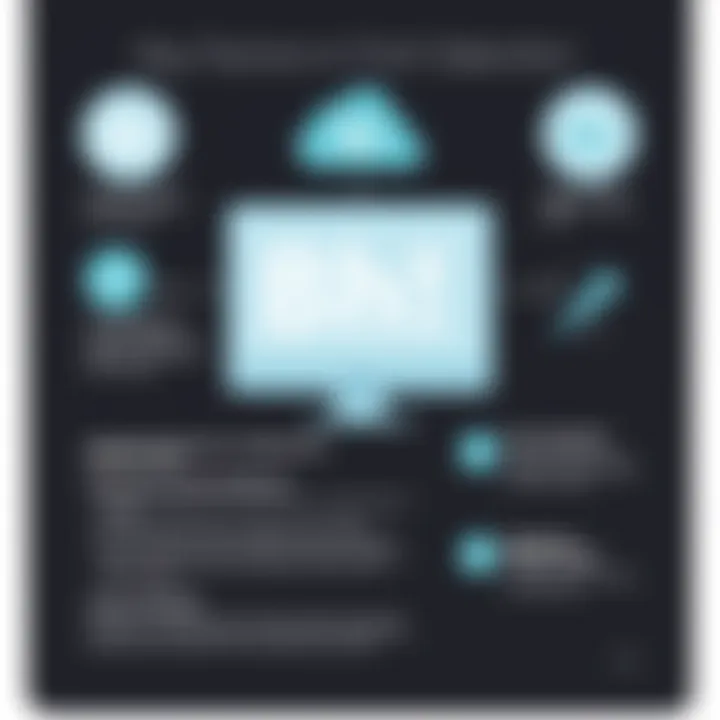
Feedback and Iteration
Once you have prototypes ready, gathering feedback is the next essential step. Using focus groups or informal surveys can provide different perspectives on the chosen fonts. It’s not just about personal preference; understanding how others perceive the font can reveal important insights.
- Key questions to ask:
- Does the font align with your perception of the brand?
- Is it easy to read, especially at various sizes?
- What feelings or associations does the font evoke?
Iterating based on this feedback can refine your design. Perhaps users believe the font feels too formal for a casual brand or too busy for a professional setting. Making adjustments based on collected insights ensures that the logo not only looks appealing but also communicates effectively.
Trends in Logo Typography
In today’s design landscape, understanding trends in logo typography is more important than ever. The fonts we choose not only serve as a visual representation of a brand but also speak volumes about its personality, values, and market positioning. The current climate is constantly evolving, demanding designers and businesses to keep a pulse on emerging trends. By doing this, they ensure that their logos remain relevant and attractive to their target audience.
Here are some key elements to consider regarding trends in logo typography:
- Cultural Resonance: Fonts can reflect cultural elements, and aligning these with current social movements or popular aesthetics can make a brand more relatable.
- Emphasis on Minimalism: Many brands are shifting towards simpler fonts to create a clean, uncluttered look. This trend emphasizes clarity and communication, making it easier for logos to be instantly recognizable.
- Variable Fonts: There’s an uptick in using variable fonts which allow flexibility in weight and style without compromising quality. These fonts adapt to different digital spaces, enhancing user experience across platforms.
Benefits of Staying Current
Listening to typography trends can lead to innovative designs that capture attention while maintaining brand integrity. With a keen eye for what’s fresh, brands can distinguish themselves from competitors. Here are some considerations that come with it:
- Staying relevant with typography enhances customer engagement.
- Timeless designs can become stale if they don’t evolve with modern aesthetics.
- Understanding trends helps in creating memorable branding that resonates with the audience.
"Fonts are not just characters; they shape perception, influence emotions, and communicate a message before a word is even read."
By keeping an eye on typography trends, businesses can refine their branding strategies, ensuring they capture the essence of their message while appealing effectively to their audience.
Current Aesthetic Trends
Aesthetic trends in typography can shift the landscape of logo design. Observing these can reveal a lot about where design is heading and what consumers are gravitating towards. As of now, we see several styles that are gaining traction:
- Bold Handwritten Styles: These fonts give a sense of personal touch, making brands appear friendly and approachable.
- Graphic Sans-Serifs: These combine geometrical shapes with a clean presentation, leaving room for versatility. They find use in various industries from tech to fashion.
- Playful Serif: While serifs are often thought to be traditional, playful variations with rounded edges and unique characteristics are in vogue, marrying classic with contemporary.
The key here is to balance aesthetics with the brand's message—each font should tell a story that aligns well with brand identity.
Predictions for Future Typography
Looking ahead, it’s essential to contemplate where typography trends might take us. Here’s what to be prepared for:
- Sustainable Fonts: With a growing concern for the environment, there could be an emergence of designs focused on sustainability, using materials and styles that reflect eco-friendliness.
- Inclusive Typography: Expect to see an emphasis on fonts that cater to diverse audiences, ensuring accessibility across different demographics, including age and ability.
- Augmented Reality (AR) Fonts: As AR technology becomes more prevalent, logos may need to adapt to three-dimensional presentations, leading to new types of font design that cater to these experiences.
Keeping these predictions in mind can help brands proactively refine their identities and stay ahead.
In the fast-changing world of logo design, tracking typography trends is not merely an act of vanity. It's a strategic endeavor, one that can yield a significant advantage in building a brand that speaks volumes.
Final Thoughts on Adobe Fonts for Logos
Choosing the right Adobe font for a logo is no small feat. This decision doesn't merely stem from aesthetic considerations; it weaves into the very fabric of a brand's identity. The font you decide on will echo your business's values and target audience. While there are myriad choices available, honing in on the ideal typeface can elevate your branding efforts from mundane to extraordinary.
Evaluating Your Choices
When tasked with selecting a font, one must take a step back and evaluate the options at hand. This doesn't just mean looking for something that looks visually appealing. Key factors such as legibility, brand alignment, and adaptability across different mediums come into play.
Some practical points to consider include:
- Audience Perception: Does the font resonate with your target demographic? For instance, using a playful font for a children's brand is a stark contrast to a more understated serif font for a law firm.
- Application Versatility: Think about how your logo will appear in different contexts, be it digital, print, merchandise, or signage. A font that's suitable in one application might falter in another.
- Timelessness: If your brand is expected to last, avoid trends that might quickly become obsolete. Fonts like Garamond or Proxima Nova have proven to maintain their appeal over time.
Careful evaluation can lead to a selection that's not only visually arresting but also laden with meaning and purpose.
Making Informed Decisions
With a pool of potential fonts assessed, the next step involves making informed decisions. It’s not just about choosing the font that feels right; it’s about substantiating this choice with solid reasoning.
- Trial and Error: Sometimes, the best way to gauge a font's effectiveness is through mock-ups. Visual representations can provide clarity, showcasing how the font harmonizes with logo elements and complements overall branding.
- Seek Feedback: When uncertain, don’t shy away from soliciting opinions. Gathering input from trusted colleagues or potential customers can provide valuable insights that might not have crossed your mind.
- Consider Branding Aspirations: Align your choice with long-term brand goals. If your vision includes expansion or diversification, select a font that can adapt as your offerings grow.
"Fonts aren’t just about letters. They convey emotions and connections that resonate with your audience."







